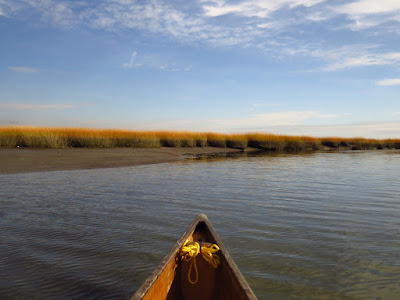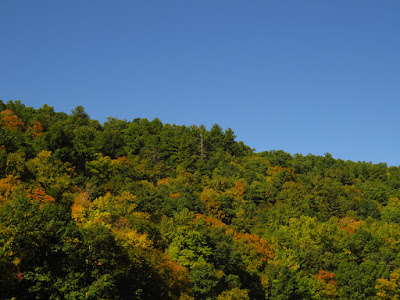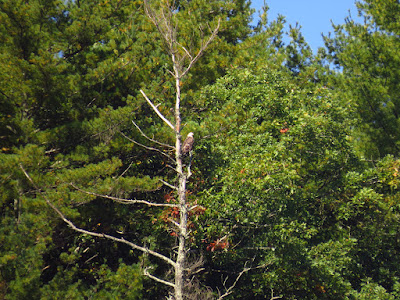I head out just an hour past low tide and the incoming current hasn't caught up with the river's natural gravity fed flow, until I am below the bridges. Three oyster boats are working the river in the mile between the launch and the top of the marsh. Forty percent of oyster seed in Long Island Sound comes out of this river, which to me, is an unusually high number given the number of rivers and estuaries feeding the sound. Housatonic oyster boats are restricted to hand winching their drags to help preserve the fishery.
The day is warm with a high thin layer of partial clouds that lets plenty of sun through. The wind is light and coming upriver.
 |
| Hudsonian Godwit |
The first bird sighting is a Great Blue Heron at the top of the marsh, The second birdis spotted just as I head down Nell's Channel. It is one that I am unfamiliar with, or at least, something I don't remember. I look it up when I get home. It is a juvenile Hudsonian Godwit migrating through. About the size of a Willet, the long upturned bill and a very obvious white butt patch make the book identification easy. This bird is on its way from Hudson Bay or the Arctic coast to Argentina, a decent commute for sure.
With the low water, I have the channel to myself. The upper end of Nell's Channel is shallow and if there is enough of a deep channel for a motorboat to squeeze through, few motorboaters would know about it. I paddle along the cut bank of the east side looking for stuff sticking out of the mud. A perfect cylinder two feet down draws me over. It is wood with the end squarely cut off - something like a broom handle. There's no way to date something like that without a lab, so I leave it. Next, is a 4x5 inch beam with a wood peg in it. It could be part of a house, shed, barn, boat, bridge, etc. Other than being old, there's nothing else to tell what it came from. Then, 20 inches or so down, a long rubber seal. It is old rubber - the old stuff, which is more rubber and less plastic, gets gooey and lifelike. Newer stuff tends to crumble, if it breaks down at all.
 |
| Beam with a wood peg |
I spot two Harriers, one ahead of me and one behind. They are both busy hunting. I spot a few more Great Blue Herons and just one Great Egret. Of note, I see zero Night Herons. There are quite a few Yellow-Legs working the low tide mud flats in the lower and central areas of the marsh.
By the time I am done poking around, I can manage the counter-clockwise circuit of the marsh and then make my way back up river on a good flood current.




















